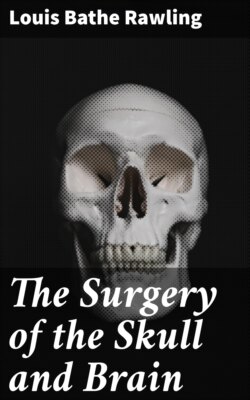Читать книгу The Surgery of the Skull and Brain - Louis Bathe Rawling - Страница 64
На сайте Литреса книга снята с продажи.
Treatment.
ОглавлениеIn the absence of symptoms, or when the fracture is associated with concussion or irritation, operative measures are contra-indicated, the patient being treated after the general principles laid down for those conditions.
When associated with symptoms of brain-compression, exploration is almost always advisable, the scalp-tourniquet being applied and the injured region exposed by a suitable scalp-flap. Depressed bone is elevated, or the trephine applied so as to fully expose the underlying dura mater. A bulging, non-pulsatile, and plum-coloured membrane points to the existence of a subdural hæmatoma. The membrane is then incised and the clot evacuated. Whenever possible the dura mater should be sewn up and the scalp-flap replaced without drainage.
Operative measures are also indicated when a linear fracture gapes widely—especially when the gap shows a tendency to increase in width. The steps of such an operation are as follows:—
1. Expose the fracture throughout its whole length.
2. Cut away all pericranium or fibrous tissue that intervenes between the margins of the cleft.
3. Separate the dura mater from the bone on either side of the cleft for a distance of about 1⁄2 inch, at the same time sewing up any rents in the membrane.
4. Bore a few holes through the skull—using an ordinary bradawl—on either side of the cleft, the holes being placed about 1⁄2 inch apart.
5. Approximate and lace the margins of the cleft by means of fine silver wire or strong catgut.
6. Sew up the flap without drainage.
